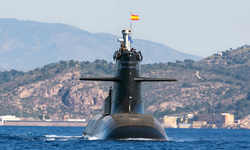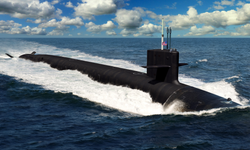“We are going to resurrect the American shipbuilding industry, including commercial and military shipbuilding,” Trump stated, emphasizing the urgency of restoring U.S. dominance in the sector. “We used to make so many ships. We don’t make them anymore very much, but we’re going to make them very fast, very soon.”
As part of the initiative, the administration plans to introduce special tax incentives to encourage domestic ship production, though specific details remain undisclosed. The White House has yet to clarify the scope of responsibilities for the new office or who will lead the effort.
This move aligns with broader efforts to strengthen the U.S. defense industrial base, which has faced increasing challenges, including project delays, cost overruns, and workforce shortages. Just last month, Senate Armed Services Committee Chairman Roger Wicker expressed concerns over the state of American shipbuilding, calling for major reforms to stabilize production and implement commercial best practices.
A Countermeasure to China’s DominanceThe creation of the new office is widely seen as a response to China’s overwhelming dominance in global shipbuilding. Chinese firms currently account for nearly half of the world’s merchant vessel production, with Beijing heavily investing in expanding its naval fleet. According to reports, the Trump administration is also preparing an executive order targeting China’s maritime industry, including potential fees on Chinese-built ships and cranes entering U.S. ports.
China has dismissed U.S. concerns, arguing that its industrial policies are fair and that the American government is deflecting responsibility for its own challenges in shipbuilding and manufacturing.
Trump's announcement comes at a critical time for the U.S. Navy, which is struggling to meet its long-term expansion goals. The Congressional Budget Office estimates that achieving the Navy’s proposed fleet size of 381 battle force ships by 2054 would require sustained annual investments exceeding $40 billion over the next 30 years.
Currently, the Navy operates 295 battle force ships, with projections indicating a decline to 283 by 2027 due to planned retirements. The administration’s push for a stronger domestic shipbuilding sector is expected to play a crucial role in reversing this trend.
Beyond shipbuilding, Trump also reiterated his administration’s commitment to bolstering national defense through initiatives such as a new missile defense shield and broader military reforms. These efforts are expected to shape the administration’s defense strategy for the coming years.
With key details still to be unveiled, the impact of the new shipbuilding office on the U.S. economy and defense capabilities will be closely watched in the months ahead.












